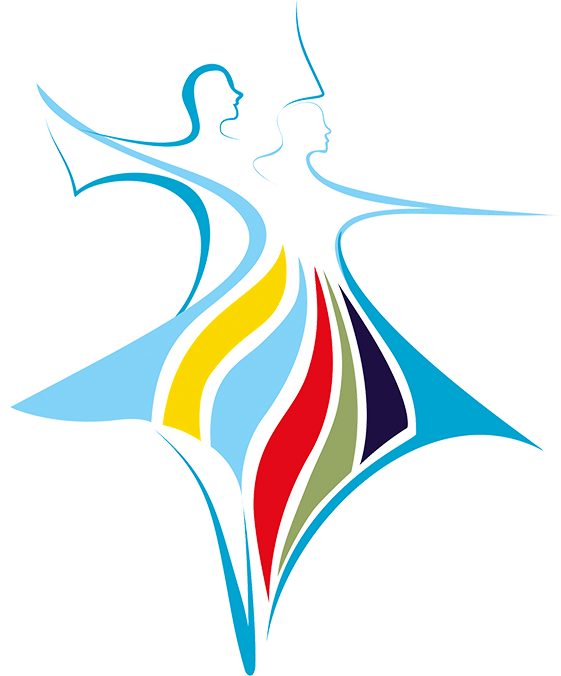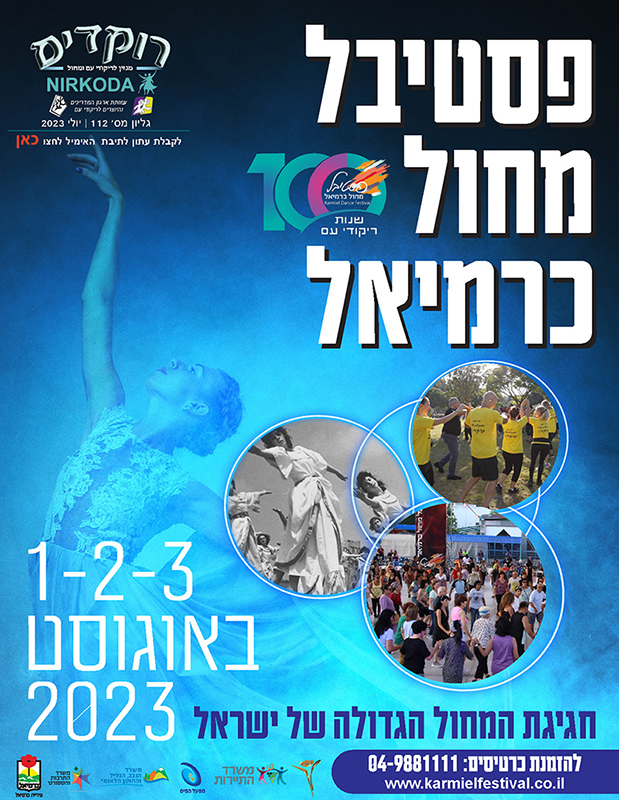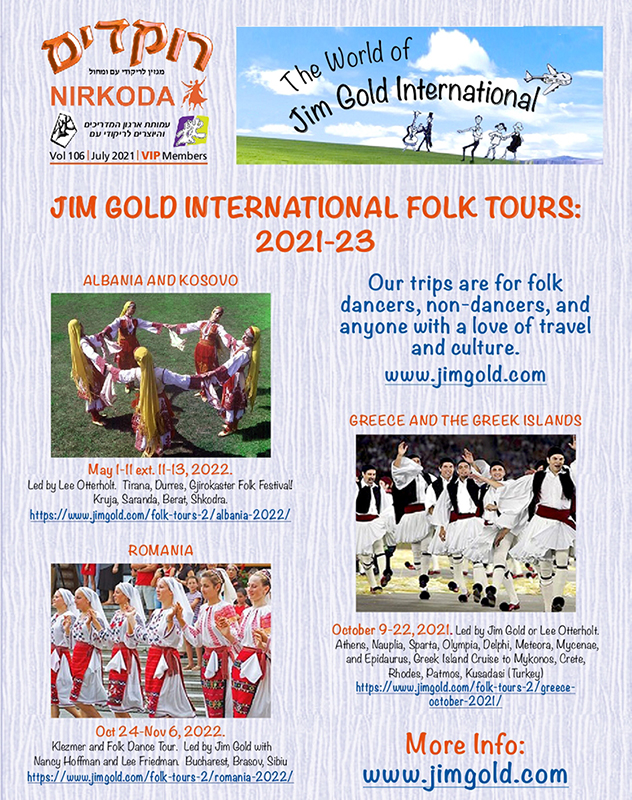- Home
- Participants
- Yaron Meishar
Meishar Yaron
- Instructor, owner of the "Rokdim" website, editor of "Rokdim-Nirkoda" magazine
-
786
Yaron Meishar – the man behind “Rokdim”:
I took my first steps in folk dancing with the children of kibbutz Shamir when I was a fourth grader. We used to learn a new dance every week. Each boy received a “private lesson” from a girl in the class and then we all got together and danced all the dances we had learned. The girls of the senior classes taught the dances to the girls of the junior classes and thus were the dances passed on from generation to generation. “Ha’Roa’a Ha’Ktana” was the most difficult dance for us to learn. If you managed to dance it you were considered a good dancer.
As early as those days at school I loved the connection between songs and steps and the social integration the circle brought about. In high school I already took courses for folk dance instructors run by the youth movement “Ha’Shomer Ha’Tzaeir” and also conducted my own dance sessions for students.
The regional dance group of the Upper Galilee at kibbutz Amir was then run by a young man, Gershon Federman, whom I remember affectionately to this day and to whom I owe my great love of international folk dances that were very popular in those days. When I was in the eleventh grade I joined the courses of the kibbutz movement that were conducted regularly at Giva’t Haviva where Maya Miron used to teach new and old international and Israeli folk dances.
When I finished school I volunteered to serve one year at the Ha’Shomer Ha’Tzair movement in Hulon and also continued to learn and teach folk dances. I did my military service as an officer at regiment 50 (parachuted Nahal), and even then continued to dance. After I completed my military service I began to dance regularly with the dance group of Kiriat Shmona and with the regional group of the Upper Galilee at Kibbutz Gonen conducted by Sefi Aviv. I was also his regular substitute. At the same time, I studied at the Ulpan for dance teachers at Kiriat Shmone, which was conducted by Sa’adia Amishai and Tamar Eligor.
In 1976 I finished the Ulpan with honors and started teaching in the Kibbutzim of the area. In 1979 I left the kibbutz and settled in Tel Aviv. There I began a preparatory course in physics and mathematics at the university of Tel Aviv. For a living I taught folk dances in schools and community centers run by the municipality of Tel Aviv.
During those years I danced with the group of Givat Shmuel conducted by Shalom Amar, the late. After the preparatory course at the university I pursued my studies at the Kibbutzim Seminar and in 85 graduated as a qualified teacher in “physical education”. During that time I founded the “Rokdim” company, which was then called “The center for folk dance recording”.
I was very “determined” to establish a center that would supply the necessary records in a professional and lawful way. Slowly but surely with great perseverance I succeeded in making the managers of the recording companies aware of the importance of the matter. I signed on special contracts with recording companies and with ACUM (the Israeli society for authors and composers). I bought professional recording equipment and specialized in editing. A booklet with instructions as to the steps of the dances was attached to each record in the catalogue. Thus were hundreds of dances recorded and registered in a uniform and professional way.
In 1987 we produced the first issue of “Meida-Am” and thousands of copies were distributed among the dancers of the various dancing groups.
The purpose was to inform our readers about the locations of the various group dances and the names of the teachers. In 1988 the name of the magazine was changed to “Rokdim” and distributed in newsstands. Later, I established the “Rokdim Club” and its members enjoy discounts on purchases made in our stores. The magazines are now sent directly to the homes of the readers.
Hundreds of dancers in Israel and abroad are members of the club. They enjoy our discounts, the colorful and manifold magazines, and the up to date information they receive. In 1992 I opened the store “Rokdim” in Tel Aviv, Ha’Arbaa street number 10. My aim was to reach out to a larger number of people and to enable each dancer and teacher to buy whatever he needed in one place. In 1994 I started producing videocassettes. Step by step and very efficiently we photographed over 1500 dances, in more than a hundred different videocassettes (by now they have all been converted to DVDs), taught by the best teachers and produced in professional studios.
The cassettes and the DVDs of “Rokdim” are now distributed all over the world and evoke a lot of praise and appreciation.
Since 1999 I have constantly been in conflict with the record companies in Israel regarding the legal distribution of the songs to the dances. In 2004, after a long struggle, I finally got the approval and our products are now officially legal.
| No. | VIP | Article Name | Subtitle | Categories | Magazine No. | Year |
|---|---|---|---|---|---|---|

710 |
Impressions from an instruction tour in Japan |
|
2003 | |||

899 |
On the development of folk dances and recreational dances |
|
2024 | |||

915 |
Awarded to Moshiko Halevy |
|
2024 | |||

990 |
Correctly “Calling” the Steps |
|
2024 | |||

1,106 |
Nice videos from Karmon Performances |
|
2020 | |||

1,107 |
The Fallow Year survey results, My insights and your responses |
|
2023 | |||

1,216 |
The dances that participated in the dance competitions in Karmiel from the first year until today |
|
2023 | |||

1,053 |
About "Folk Dances", “Recreational Dances" and "Temporal Dances” |
|
2023 | |||

1,033 |
A Survey of Readers and Their Reactions |
|
2022 | |||

906 |
A Salute to Dov Zeira z”l |
|
2021 | |||

1,045 |
Better Late Than Never |
|
2022 | |||

996 |
Moshe Eskayo z”l: 11.30.1931 – 4.5.2022 |
|
2022 |















